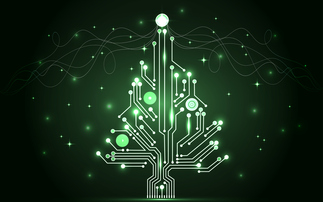Even the briefest power interruption can have a costly impact on businesses - Alan Barlow, Director of UK and Ireland for Centrica Business Solutions, discusses what lessons can be learnt from the UK's recent major power cut
The biggest power outage in a decade provided a sharp reminder of the need for businesses to think seriously about energy resilience and have a robust emergency backup plan should the worst happen.
The lights went out on nearly a million people across England and Wales during the rush hour on Friday 9 August, causing chaos for rail, road and air commuters. Retail tills froze, manufacturing processes halted, IT systems crashed and many businesses had no electricity supply.
Counting the cost of power loss
Although power was restored to most sites within an hour, it may take longer for some of the affected businesses to recover from the ordeal. Energy loss can be highly damaging - both in terms of lost productivity and potential reputational damage. In certain instances, even the briefest power interruption can cause equipment damage, which is why it's so critical that organisations are well prepared.
Sometimes it's only when a power outage occurs that we realise the extent to which our organisations rely on a consistent energy supply. At this point any vulnerable areas of operation become obvious, but by that time the damage is done.
Power supply disruption is a top 4 business risk
The elevated risk is reflected in rising concern among businesses. Our 2019 Distributed Energy, Future Trends research shows that energy resilience is now viewed as one of the top-four business risks (only narrowly beaten by financial, market and cyber-crime risks).
Despite these fears, most businesses don't have adequate plans to deal with energy related failure. Almost 75 per cent of 1,500 business leaders we interviewed admitted that they feel under-prepared to deal with the increasing threat of power supply disruption.
Power dependency and security risk is set to grow as businesses become increasingly digitised and automated, which is a fact that's recognised by 87 per cent of the most energy advanced businesses we interviewed. These energy leaders have robust resilience strategies in place, but are also the most sustainable and best prepared to maximise the competitive advantage of big data as part of their business growth strategies.
How to minimise energy supply risk
During the recent outage, those businesses with a well-rehearsed emergency back-up plan and robust energy resilience strategy could rise above the panic of their competitors, so what sort of action are they taking to reduce risk?
Linking resilience into a long-term energy strategy will provide the ultimate protection, but some businesses prefer to take smaller, more practical steps to secure business continuity.
Deploying onsite generation technologies to reduce dependency on the power network is one such method. Solar or CHP can be combined with battery storage to provide a sustainable and cost-effective uninterrupted power supply (UPS) that can be activated instantly should the electrical system fail.
The best prepared businesses are also monitoring the energy performance of their critical equipment and processes to guard against energy outages. One of the most frequent causes of energy-related failure is ageing and poorly maintained equipment, but by attaching IoT enabled sensors to this equipment, businesses can gain full visibility of device-level energy performance. Advanced energy insight technologies can identify hidden problems, enabling faults to be remedied for improved equipment and energy reliability.
While the above measures will provide effective fixes, we also advise businesses to develop an energy resilience plan by implementing the following three-step process.
1. Understand your site's risk potential
The first step is to understand your site's energy profile. Use energy insights technologies to audit your systems and processes to gain a real-time view that will highlight potential vulnerabilities.
2. Make sure any existing back-up systems work effectively
Examine the capabilities, sizing and performance of your back up systems to ensure they can meet critical loads in the event of any lapse in supply. Regular testing is critical.
3. Calculate the impact of power disruption
Work out which systems are critical and the potential impact of power interruption so that you can prioritise your energy resilience plan and keep the essential systems, such as IT, energised no matter what.
Centrica Business Solutions can design and implement resilient energy solutions to improve the reliability of your critical energy assets and pinpoint vulnerabilities. The outages seen recently may be a once in a decade event, but being prepared for them will help you sleep a little easier at night.
Read our report, Future-Proofing Your Company's Energy Needs to discover the actions you can take to defend your organisation from energy supply interruption.







